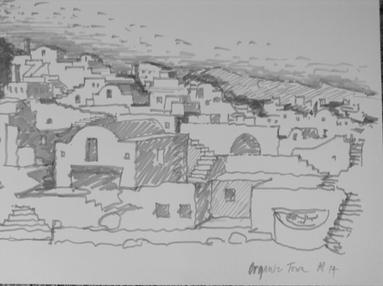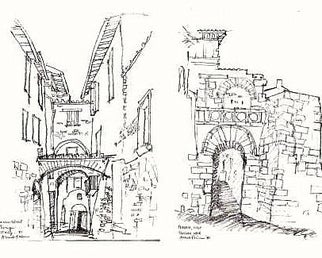ON CITIES

Just what is a city?
In this era, perhaps what first comes to mind is the image of a place full of the hustle and bustle of daily life with people, buildings, roads and vehicles all clustered together in a way that overwhelm the individual. Perhaps, it is a place one is most familiar with. However, the question still remains as to what constitutes a “city”. I questioned this many years ago while residing in the sprawling suburbs of Washington DC, searching for a more figurative explanation on the subject.
In the United States and the United Kingdom, it is customary for a municipality to call it’s jurisdiction a “City”. So we have the City of Falls Church, the City of San Jose, City of New York, the City of Santa Clara, City of Los Gatos, City of Berkeley and so on. The basis of referring to these places as “cities” seems to be focused on the amenities they provide (commerce, public facilities, multilane roads, sidewalks, traffic control, drainage control, lighting etc.) rather than the image they project figuratively.
My own view is that ‘City” itself is a relative term. Over time, its concept has indeed changed, both physically and economically; but what is of essence here is the concept of"place". Place has an innate connection with the physical structure of a settlement, i.e., size, density and networks. A City, then, must have these three very basic but strongly identifiable figural and imageable elements. A City is not necessitated by industry, but rather it happens to be vice-versa. Industry is necessitated by dwelling and settlement. Many ancient cities are good examples – rather than stretched out courses of individual dwellings connected by roads, one finds compact patterns in ancient cities, whether along a coastline or inland, on hillsides or in deserts. The ancient city perimeter wall is an archetype that, while obsolete, serves to illustrate the primordial nature of the city as a commune for security and proximity, where work, trade and production flourished only after the initiative of settlement. Of course, settlers did consider the availability of water and basic resources for survival when choosing a site. As an example, if one travels to Umbria, the core of Italy, one finds medieval towns like Orvieto, Gubbio and Assisi perched on topography that would not be considered legitimate by today’s standards. Yet these cities have survived for centuries. Their trade and commerce are local and not induced. They may be poor, but the intent here is not to discuss the economic aspects, simply to portray the primordial nature of settlement.
A City is hence first necessitated by the concept of commune or “dwelling in communion”, of proximity for the sake of security, followed by economic interdependence. It is characterized by the grouping of neighborhoods and linkages between them that articulate this sense of proximity or dwelling in communion. This is the fundamental notion of what constitutes a City. The denser it is, the more urban and figural is its character. Density is the most important figural aspect of a City that sets it aside from rural areas, small towns and villages. Density, followed by size, provides the raw material for a good figure-ground relationship on a city’s map. It is what makes the City imageable. Those of us who have traveled to historic cities in Europe or Asia will be familiar with this. The virtual wall of buildings that defines the streets of a city is immediately figural, both at ground level and from above. This sense of enclosure that the mass of dense buildings provides the streets helps to define a strong figure-ground, with the mass as figure and streets as ground, contributing to the image of commune.
Once density is removed from equation, the figure-ground is lost, and we have suburban sprawl. Networks take over in prominence. Figure becomes Ground, and vice-versa. The suburb only provides the infrastructural amenities that define a City by today’s standards but does not meet the figural description. So, with that I return to the original question – just what is a city ? To me, it is quite clear that, notwithstanding all the nuances within urban trends of today, the most fundamental definition of city lies in its ability to provide a sense of place through its most clearly imageable and figural qualities. All other notions of “city” are peripheral to this central definition, and remain temporally valid only insofar as the reality they represent remains extant.
Ayub H. Patel



Create Your Own Website With Webador